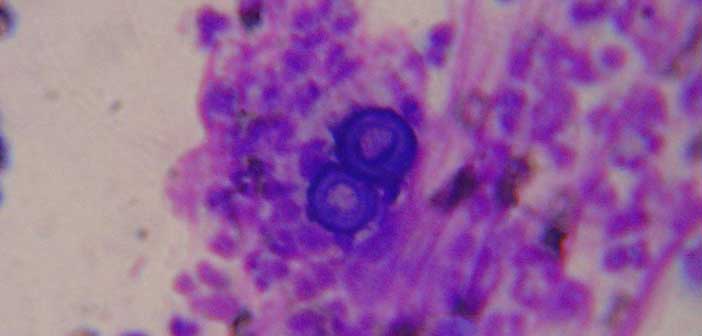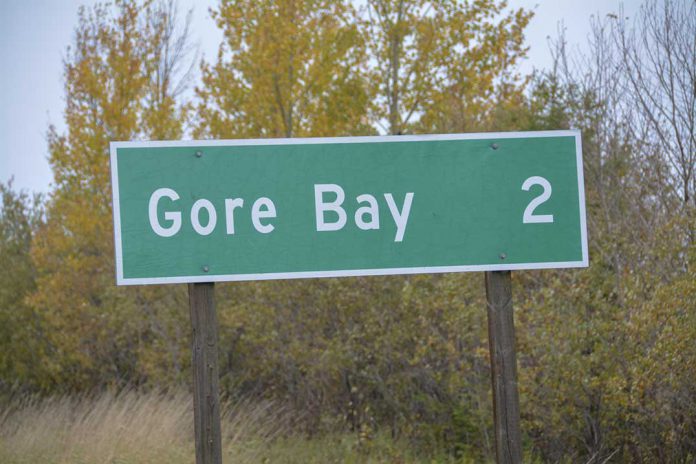MINDEMOYA—As Manitoulin Island is an endemic area, or susceptible to where cases of blastomycosis cases have been found, it is imperative that members of the public are educated on the disease, says a representative of Public Health Sudbury and Districts (PHSD).
“The health unit wants to make the public aware of blastomycosis and educate them on the disease,” said Adam Ranger, (PHSD) environmental support officer, at a presentation he made at the Manitoulin Nature Club (MNC) last Friday.
Mr. Ranger noted, “as of 2018, blastomycosis is now a reportable disease. So now we are required to notify the public of the disease and when there are reports of it in the area, and to educate the public on it. We know it is here in our area.”
In 2018 there were 54 confirmed cases of blastomycosis in Ontario, two in the Manitoulin Island or PHSD area. “In 2019 there were 45 cases and three in our area,” Mr. Ranger told the meeting, stressing the latter figures only take in to the end of July.
Mr. Ranger provided an introduction to the disease, what it is, how you get it, what its symptoms are, where it can be found and how to protect yourself from it.
Blastomycosis is caused by a fungus, and you can get it by breathing in the fungus from the soil, by disturbing the soil or rotting vegetation. It can also be caused by the fungus getting into the skin through an abrasion. The disease is not spread from person to person or from pets.
“Because dogs are in such close proximity to the ground, and because they dig in the soil, they are 10 times more susceptible than humans to get the disease,” continued Mr. Ranger.
Blasto symptoms include coughing, shortness of breath, sweat, fever, fatigue, unwanted weight loss, muscular stiffness and pain or rash and skin lesions, the meeting was told.
Mr. Ranger said from the time someone is exposed to the disease it can take from three-and-a-half weeks to three-and-a-half months before symptoms show. And diagnosis is done by taking sputum or tissue samples.
The disease is treated with anti-fungal medications. “The initial anti-fungal medication is not too bad, but some anti-fungal medications can be some of the harshest medications there is.”
Blasto is found in areas like Manitoba, Ontario, Saskatchewan, Quebec, areas around the Great Lakes and the Mississippi River. It is difficult to test an area to see if it is present because it is hard to find in patches and in soils.
To protect yourself from blasto, Mr. Ranger said “activities that may put people at greater risk of exposure include being close to shorelines, hunting, trapping, gardening with shovels, clearing wet or rotten wood for example. Be aware of your activities and the area you are working in, and know the symptoms.” And he stated, “if you feel ill tell your doctor your symptoms and if you have been working in an area that may have blasto.”
He said it’s important to wear protective work gloves, long sleeve shirts and pants, proper footwear in areas where in which for instance you may be disturbing soil.
“There are medications out there that work,” said Mr. Ranger. “Be informed, know the symptoms and take reasonable precautions. And if you feel ill tell your health care provider that you may have contacted blasto.”
One person at the meeting said they know of six dogs that have died of blastomycosis. “There is a potential risk to dogs etc., we know it’s here,” said Mr. Ranger. “That’s why we are raising awareness of the disease.”
When asked what the hospital rate for humans with blasto is Mr. Ranger said, “it is very, very low; 0.35 percent of every 100,000 persons who come in contact with the disease have to spend any time in the hospital.
“I don’t know when it was first detected in our area,” said Mr. Ranger of Blasto. “But we know our area (PHSD) is an endemic area, blastomycosis is here. But for most people it is not common knowledge. That’s why we are educating people about the disease.”
To learn more about the disease, visit manitoulin.ca and search ‘blastomycosis.’





